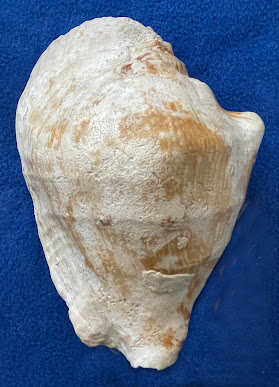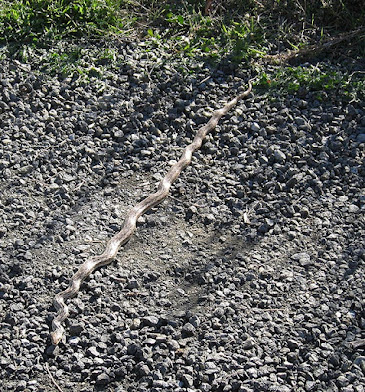This post concerns a Google-Earth image in southeastern Pakistan, where a noticeable fold system trends northwardly toward the Himalaya Mountain region (Figure 1). I shall very briefly discuss the geology of each main part of this fold system. Note: Prior to 1976, there was little or no geologic mapping in this region of Pakistan.
Figure 1. Google-Earth image of southeastern Pakistan.
Figure 2. The area pertinent to the text in this blog is located near the right side of the above-shown map (just left of the two red lines with arrows--located just left of the word "Delhi." This base map is from the “The Earth’s Fractured Surface,” published by the National Geographic Society (1995). At the southern end of the "Arabian Plate" on this map is a heavy, red line with “teeth,” indicating the presence of the Makram Suduction-Zone trench.
Figure 3. Sketch map of the geology showing the geology between the Kirthar Mountains, Makran, the Makram Mountains, the Bruhui Mountains, the Sulaiman Mountains, and the Hindu Kush Mountains.
Overview of the lithology, etc., found in each of the above- mentioned mountain ranges:
Makran Mountains: 600 miles (1,000 km) long, bordering the shore of the Arabian Sea, these mountains represent an accretionary prism consisting of Lower Paleozoic and Mesozoic ophiolites (i.e., metamorphic “basement rocks.”) Subsequently, these rocks had a complicated geologic history that started with turbidite sedimentation, followed, during the Miocene, by deposition of thick reef limestones. There was intense tectonic dislocation at the end of the Miocene, followed by subduction (along a trench just offshore in the adjacent Arabian Sea). During Plio-Pleistocene time, there was uplift and spectacular deposition of Plio-Pleistocene fanglomerates. In the “big picture of geologic history,” the Makram area geologically was situated in adjacent to a fore-arc zone area during the Cenozoic (McCall, 1997).
The southern margin of the Makran Mountains is just north of an active convergent boundary (i.e., the Makran Trench or Makram Subduction Zone), where the Arabian Plate is presently subducting beneath the Eurasian Plate at the rate of 2 to 4 cm/year. This subduction has caused strong compressive forces that strongly folded the Makran and Bruhui Mountain Ranges into a composite “S” shape. This shape is very noticeable on Google Earth satellite images.
The subductive forces in the Makran and Bruhui Range have caused offshore cold seeps of gases, as well as, mud volcanoes (e,g., Zalzala Jazeera “island” that formed in 2013; it subsequently was destroyed by ocean-wave action) (see Wikipedia).
Kirthar Mountains: 190 miles (300 km) long (south to north). Rocks in the southern and middle part are mainly shale of middle Eocene age; those in the northern part are mainly limestone. The highest peak is 9,498 feet (2,895 m). The subductive forces in the Makram and Bruhui Range have caused offshore cold seeps of gases, as well as, mud volcanoes (e,g., Zalzala Jazeera “island” that formed in 2013; it subsequently was destroyed by ocean-wave action) (see Wikipedia).
Bruhui Mountains: 225 mi (360 km) long in a series of parallel limestone ridges. The highest peak is 11,738 feet (3,578 m). The highest peak in the Brahui Range is 11,738 feet (3,578 m) high.
Sulaiman Mountains: Represent a transitional zone between the geology of the Bruhui Range and the Hindu Kush Mountains. The highest is 11,099 feet. As India tectonically moved northward, it wrenched westward, collided with this part of Pakistan, and produced some of the most unusual looking plunging folds known on Earth.
Hindu Kush Mountains: 800-km-long mountain range; the eastern end merges with the Karakoram Range. The Hindu Kush Mountains consist of metamorphic rocks (schist, gneiss, marble, and also granite intrusives).
References Cited:
McCall, G.J.H. 1997. The geotectonic history of the Makran and adjacent areas of southern Iran. Journal of Asian Earth Science, v. 15, issue 6, pp. 517-531. Abstract is available for free, but the pdf of the paper costs $.
National Geographic Society, April, 1995. A loose fold-out map, with the title: The Earth’s Fractured Surface. Scale 1:48,000 or 1 inch = 758 miles at the equator.










